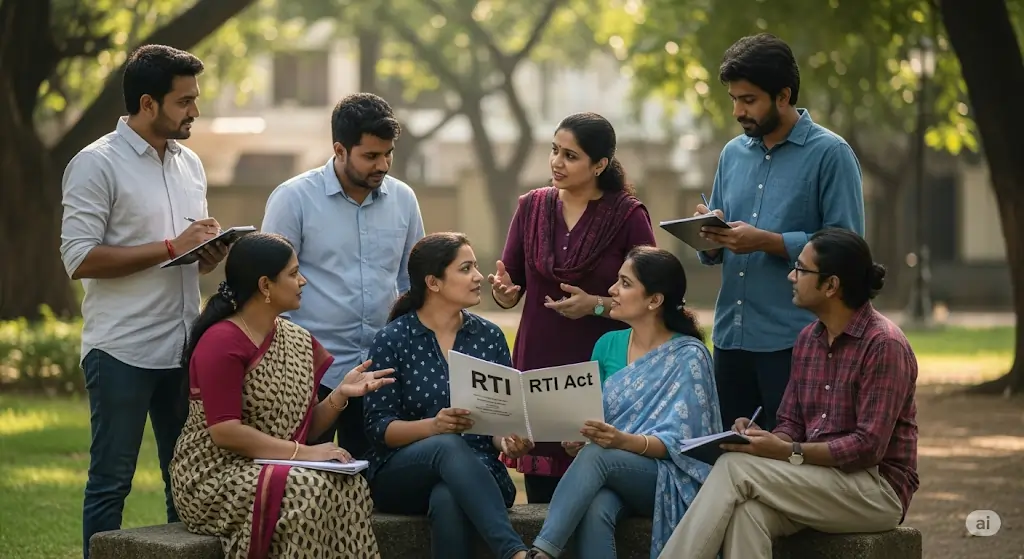
The Right to information act enacted in 2005 is a very powerful tool in India that allows citizens to get information from the government . This uses the information to hold the government accountable to operate in a transparent and honest way. It is critical for every Indian citizen to know their rights under the RTI Act for the simple power this Act gives citizens to scrutinize government action, expose and reduce corruption, and enhance their overall quality of life.
This article covers what the RTI Act is, why it is important, and some anecdotal accounts to assist in illustrating some of its impact in real-life situations.
What is the RTI Act?
It is a straightforward concept in the sense that it states the government will provide easily accessible information to its citizens. It empowers its users: An ordinary citizen of India can request the government office to provide information about a project, or funds spent, or decisions made. There lies the significance and power of the Act, as the government must respond to the request in 30 days.
The Act also covers essentially all government offices, both government and controlled (i.e., schools, hospitals, etc.) and other organizations funded in common by the public (i.e., non-profits, etc.). The Act says that government offices should post key information (i.e., budget approvals, plan reports, etc.) on their websites after the information is available for the common public to view.
The right to information is based on the idea that the government is people’s servant. Because India is a democracy, citizens have a right to know how their government is working. The Indian Constitution protects the right to freedom of expression and the right to get information. Questions by citizens hold the government accountable and help ensure the government is not only functioning but functioning efficiently and properly.
Why is it Significant that Everybody in India Should Know about it?
The RTI Act is a positive way for anyone to do something. If you know how to use it, you can bring about change, either at the local level or by holding the government to account. RTI will allow you to ask questions about things that affect your day-to-day life, such as, “Why is there a pothole in the road that is not being fixed?” or, “What are the funds for my child’s school being spent on?” It’s quite simple, to use RTI you just write your request, pay a fee (which is usually ₹10), and wait for a response.
The RTI Act is also an anti-corruption tool. If everyone knows what the government is doing, it makes it a lot harder for anyone to misuse funds or power. Whether you are rich or poor, or educated or not, anyone can use RTI and can be heard.
RTI in Action: Real Life Examples
The RTI Act has transformed lives. For example, the villagers of Rajasthan used the clauses of the RTI Act to request public records to trace where food from the Public Distribution System (PDS) was going. Their RTI requests to the PDS revealed food was not provided and theft was occurring; once highlighted, the system responded and delivered the rations. In this case, RTI illustrated how small collectives can assert their rights.
Another significant example of how RTI worked, was the Adarsh Housing Society scam that occurred in Mumbai in 2010.
A whistleblower filed RTI requests, to find out that a building meant for war widows had been given to powerful politicians!
Many RTI applications on one question have opened up a massive investigation by exposing a considerable injustice that occurred previously, and that existed, because some RTI applicants mobilized to ask questions.
RTI doesn’t apply only to major misconduct. A person from Delhi patiently used the RTI Act to ask their local government why road repairs remained incomplete; the response revealed that officials had siphoned off the funds. After the request the local government quite quickly repaired the road.
The Challenges and Next Steps
RTI can sometimes be difficult and often be very challenging work, or at least a significant undertaking. Different arms of government can create perceived or actual barriers that obstruct and stall the RTI process. There is some strong anecdotal evidence of even some form of physical threats against some RTI users. Another challenge is there are many citizens, especially in rural areas, who have never even heard of RTI legislation.
If every citizen has RTI awareness in schools, through media, and through awareness campaigns it can increase utilization of RTI. And if the movement towards online utilization and increasing protections for RTI users continue to develop that could help establish early utilization.
Conclusions
The RTI Act prescribes a fairly straightforward mechanism, for citizens of India to use to hold their government is accountable. It provides a means for every individual citizen to ask questions, discover truth or seek to have issues of concern within their communities addressed. Whether stopping corruption, addressing grievances, or getting a pothole filled, RTI empowers every citizen to raise their voice and be heard. A simple awareness of, and then even potential utilization of, the legislation is a very small part of contributing to a better and fairer India.
